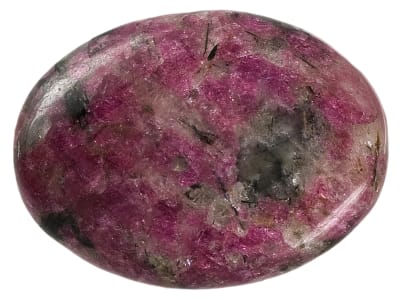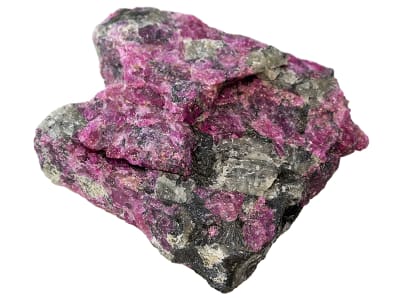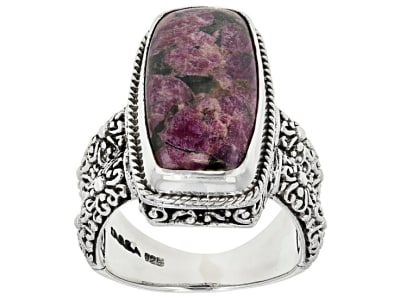Discovered 1819 in Greenland, this gemstone is usually found in massive forms in host rocks. Eudialyte is an extremely rare and complex mineral that occurs in red-violets, pinks, blues, yellows and browns. Well-formed crystals are rare, and opaque material is often fashioned in cabochons.
General Information
LWUV: Inert
Eudialyte Colors
-
 Blue
Blue -
 Brown
Brown -
 Multi-color
Multi-color -
 Orange
Orange -
 Pink
Pink -
 Purple
Purple -
 Red
Red -
 Red
Red -
 Yellow
Yellow
Countries of Origin
Tanzania, United Republic Of; Russian Federation; Angola; Czechia; Guinea; United States of America; Egypt; Madagascar; Kazakhstan; Paraguay; United Kingdom of Great Britain and Northern Ireland; Libya; Portugal; Mongolia; Sweden; Mozambique; Morocco; Unknown; Malawi; Mali; China; Ireland; Saint Helena, Ascension and Tristan da Cunha; Brazil; Poland; Algeria; Cabo Verde; France; Romania; Hungary; Ukraine; Kenya; India; Spain; Canada; Norway; Namibia; Congo (the Democratic Republic of the); South Africa; Antarctica; Australia; Greenland; Tajikistan


